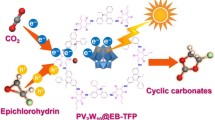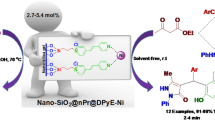Abstract
In ongoing attempts to synthesize nanosized gold-platinum carbonyl phosphine clusters either directly or indirectly by initially obtaining intermediate-sized ones as potential precursors, the neutral Au–Pt CO/PR3-ligated cluster, Pt7(μ 2-CO)8 (PPh3)4(μ 4-AuPPh3)2 (1), was isolated and characterized by low-temperature CCD X-ray diffraction, IR, and mass spectrometric measurements. The heretofore unknown 9-atom metal architecture of the Au2Pt7 core may be envisioned as a Pt7 adduct of a Pt4 butterfly and an edge-opened Pt3 triangle that is additionally linked by two tetracapping AuPPh3 units. Each of the two butterfly-hinged (basal) Pt atoms is connected to two of the three edge-opened triangular Pt atoms thereby giving rise to an essentially coplanar Pt5 fragment consisting of three edge-fused bonding triangles; addition of two AuPPh3 units to the Pt7 adduct completes the Au2Pt7 framework via formation of the two symmetry-equivalent square-pyramidal (μ 4-Au)Pt4 moieties, each resulting from the tetracapping of a AuPPh3 unit to the central Pt3 triangle of the coplanar Pt5 fragment and to one of the two out-of-plane wingtip Pt atoms. Six PPh3 ligands are coordinated to the two Au atoms, the two wingtip Pt atoms of the Pt4butterfly-shaped fragment, and the two outer Pt atoms of the edge-opened Pt3 triangle. Four of the eight doubly bridging μ 2-COs link the four edges connecting the two out-of-plane wingtip Pt atoms with the two hinged (basal) Pt atoms, while the other four μ 2-COs span four of the five Pt–Pt bonding edges of the coplanar Pt5 fragment (i.e., the fifth Pt–Pt bonding edge is spanned by the two out-of-plane wingtip Pt atoms). The resulting molecular configuration (without P-attached phenyl substituents) possesses crystallographic C2 (2) and pseudo-C2v symmetry. An optimized geometry of the PH3- and PMe3-models of 1, obtained from gradient-corrected (scalar-relativistic) DFT calculations is in reasonably good agreement with the crystallographically determined geometry of 1.A structure-to-synthesis approach is presented as part of extensive but unsuccessful efforts to design a high-yield reproducible preparative route to 1 in order to enable physical/chemical studies as well as to utilize it as a preformed cluster for further PPh3/CO deligation reactions.
Similar content being viewed by others
Author information
Authors and Affiliations
Corresponding author
Rights and permissions
About this article
Cite this article
Ivanov, S.A., de Silva, N., Kozee, M.A. et al. Synthesis and Structural/Theoretical (DFT) Analysis of the Geometrically Unprecedented Au–Pt Cluster, Pt7(μ 2-CO)8(PPh3)4(μ 4-AuPPh3)2: Structure-to-Synthesis Appraisal Concerning Its Formation. Journal of Cluster Science 15, 233–261 (2004). https://doi.org/10.1023/B:JOCL.0000027433.97439.3e
Issue Date:
DOI: https://doi.org/10.1023/B:JOCL.0000027433.97439.3e




